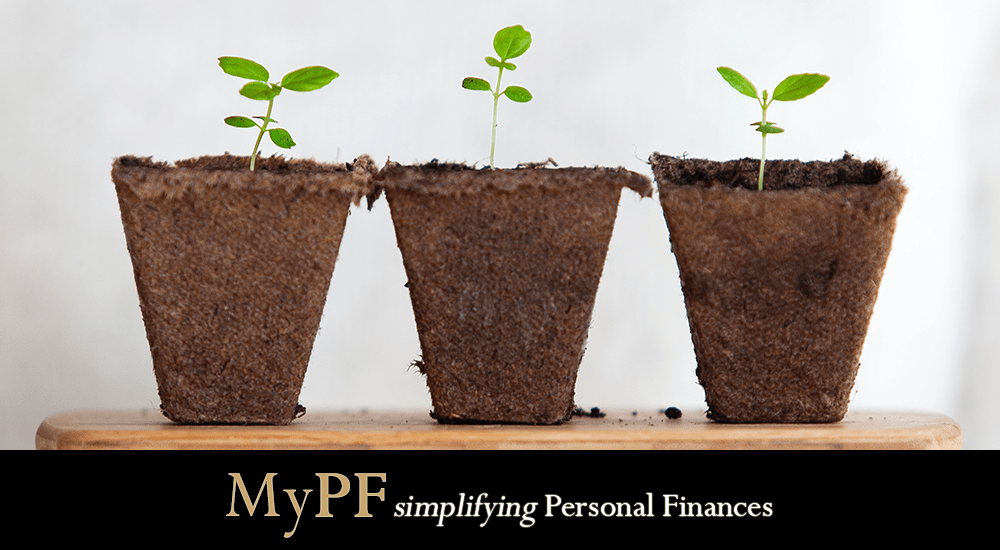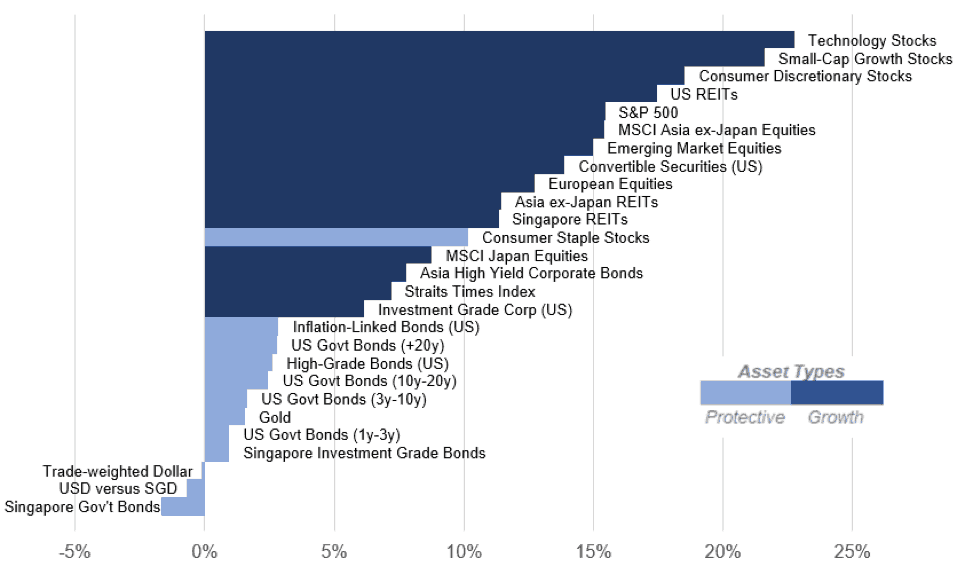Green shoots are sprouting for financial markets this year. We recap what happened last year with Trump and Fed. We look at what’s budding and what you need to avoid. The original version of this article was published on StashAway.my

Contents
Winter is Over
You may remember 2018’s two major ongoing market news stories that brought uneasiness to investors: One was the US Fed tightening and the second was Trump’s unilateral trade war with China.
These two stories were such strong forces that they arguably were responsible for 2018’s two market corrections. There was massive withdrawal of liquidity from a combination of interest rate hikes and balance sheet reduction at the US Federal Reserve. Then markets had to confront the chain disruptions because of Trump’s trade war with China.
As monumental as those two forces seemed only really months ago, their influence is now lessening, turning them into relatively harmless, lingering ghosts of markets past.
For one, the Fed has made an unusual and rapid U-turn on monetary policy. In short, the Fed has caved, and is now facing economic realities and acknowledging broader developments, such as the trade war being a risk to the economy.
On the trade war front, markets have become increasingly desensitized to Trump’s tweets and jolts. While it’s unlikely that the trade war will resolve any time soon, we will likely see a face-saving deal between the US and China. It’s also likely that trade tensions will flare up again as we approach the US’ presidential election in 2020. Although Trump has recently shifted his tariff focus from China to the EU, as he’s ruffled by Europe’s subsidy of Airbus, the markets won’t react the way they did in 2018. We have seen this behavior from Trump before and this will ultimately reduce the extent of any short-term negative reactions.

Green Shoots Sprouting
Beyond geopolitical issues and the Fed, we are seeing green shoots sprouting in a number of economies. The first positive surprise came from China, which received a 50.8 figure in March from the much-watched Caixin PMI (Purchasing Managers Index). A figure above 50 indicates that businesses are expecting some growth of future industrial activities. This 50.8 print marks a meaningful reversal from China’s recent low of 48.6 just two months before in January 2019.
In Europe, production data have shown a slump in the bloc’s manufacturing sector, but the services sector have been chalking up good numbers. In fact, the service PMIs for four of the biggest economies in the Eurozone (Germany, France, Spain, and Italy) have all exceeded economists’ expectations. Overall, this has stabilized the Composite PMI for the Eurozone, indicating that the aggregate Eurozone economy is stabilizing.
In the US, leading indicators, such as the Conference Board’s Leading Economic Index (LEI), which is used to forecast future economic activity, have declined, but have done so from a high bar. Specifically, the Conference Board LEI’s annual rate of growth peaked at +6.6% in September 2018. It has since tapered off to +3% YoY. You can interpret this change to mean that the world’s largest economy is still growing, just at a more moderate pace. Good news is that the market is a fast-moving voting machine, and reacted to this negativity back in late 2018. Yet, the US stock market held up above bear market territory and defied sentiments to deliver a big rebound in 2019.
It’s hard to dispute the media’s propensity to continually turn out negative spins on news. Perhaps bad news sells better, but in the end, the markets knew better. Markets cut through the noise to hold their own: As shown in Figure 1, growth-oriented assets have defied the media’s incessant focus on negativity, leading to a remarkable outperformance on a year-to-date basis in 2019.

(Source: Bloomberg, StashAway)
Avoid FOMO and FOF
Looking at the last few months, sector performance has been quite volatile. But investing is inherently volatile, no matter the economic conditions. Market unpredictability manifests as market volatility, and tolerating the volatility is why we get compensated with asset returns. But earning that upside requires investors to stay in the markets long enough to see beyond the short-term volatility and experience the long-term upward trend of the markets. The only way to reap the benefits and realize this compensation is to stay invested and let time do the compounding.
The costliest mistakes for investors is to respond to market volatility: too often we see investors chasing the highs for fear of missing out (FOMO), only to cash out too late. It’s also damaging (and unfortunately common) for investors to withdraw when they get nervous about short-term lows or negative returns, a response commonly known as the fight-or-flight (FOF).
FOMO: Fear Of Missing Out – investor anxiety when seeing others are successful that they will miss that opportunity
FOF: Fight or Flight – an instinctive investor response to resist forcibly or run away
At the end of 2018, when the markets were not performing well, investors need to stay invested in the markets and to maintain their dollar-cost-averaging plans to buy into the markets when they’re low.
Today, on the other side of the same coin, we cannot emphasize enough how important it is not to get over-excited about amazing returns YTD, to stay invested, and to keep dollar-cost-averaging by sticking to your plans. Don’t try to “sell at the peak”, but also don’t bet the house (or your horse) on the fact that the rally will continue. Just stick to your plan.
The two market corrections of 2018 with the subsequent large positive reversal of markets this year have perfectly illustrated the importance of sticking to your investment plans. At the risk of being boring, our recommendation will always be to ride the natural ups and downs of the markets. Building wealth is a marathon: choose your pace and stick to it. If you feel uneasy about the short-term ups and downs, then it’s time to reevaluate how much risk you’re taking. Taking on more risk than what is necessary to achieve returns, or that is uncomfortable for you, only hurts you.
Signup for StashAway
0% Fees for 6 months up to RM100k with this exclusive MyPF link
Find out more about StashAway
Interview with StashAway Co-Founder & CIO
[embedyt]https://youtu.be/-iycZQz-kCA[/embedyt]


Leave A Comment